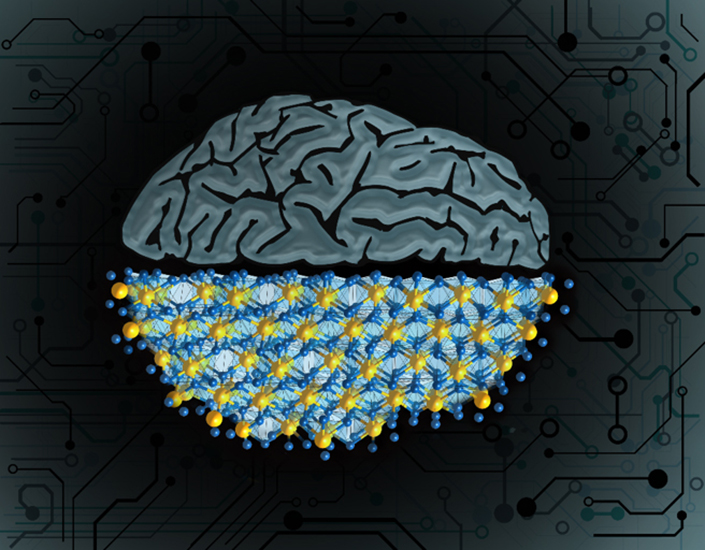Neuromorphic computing: The quest for computers that think like people

Ever wish your computer could think like you do or perhaps even understand you?
That future may not be now, but it’s one step closer, thanks to a Texas A&M University-led team of scientists and engineers and their recent discovery of a materials-based mimic for the neural signals responsible for transmitting information within the human brain.
The multidisciplinary team, led by Texas A&M chemist Sarbajit Banerjee in collaboration with Texas A&M electrical and computer engineer R. Stanley Williams and additional colleagues across North America and abroad, has discovered a neuron-like electrical switching mechanism in the solid-state material β’-CuxV2O5 — specifically, how it reversibly morphs between conducting and insulating behavior on command.
The team was able to clarify the underlying mechanism driving this behavior by taking a new look at β’-CuxV2O5, a remarkable chameleon-like material that changes with temperature or an applied electrical stimulus. In the process, they zeroed in on how copper ions move around inside the material and how this subtle dance in turn sloshes electrons around to transform it. Their research revealed that the movement of copper ions is the linchpin of an electrical conductivity change which can be leveraged to create electrical spikes in the same way that neurons function in the cerebral nervous system — a major step toward developing circuitry that functions like the human brain.
Their resulting paper, which features Texas A&M chemistry graduate students Abhishek Parija (now at Intel Corporation), Justin Andrews and Joseph Handy as first authors, was published Feb. 27 in the Cell Press journal Matter.
In their quest to develop new modes of energy efficient computing, the broad-based group of collaborators is capitalizing on materials with tunable electronic instabilities to achieve what’s known as neuromorphic computing, or computing designed to replicate the brain’s unique capabilities and unmatched efficiencies.
“Nature has given us materials with the appropriate types of behavior to mimic the information processing that occurs in a brain, but the ones characterized to date have had various limitations,” Williams said. “The importance of this work is to show that chemists can rationally design and create electrically active materials with significantly improved neuromorphic properties. As we understand more, our materials will improve significantly, thus providing a new path to the continual technological advancement of our computing abilities.”
While smart phones and laptops seemingly get sleeker and faster with each iteration, Parija notes that new materials and computing paradigms freed from conventional restrictions are required to meet continuing speed and energy-efficiency demands that are straining the capabilities of silicon computer chips, which are reaching their fundamental limits in terms of energy efficiency. Neuromorphic computing is one such approach, and manipulation of switching behavior in new materials is one way to achieve it.
“The central premise — and by extension the central promise — of neuromorphic computing is that we still have not found a way to perform computations in a way that is as efficient as the way that neurons and synapses function in the human brain,” said Andrews, a NASA Space Technology Research Fellow. “Most materials are insulating (not conductive), metallic (conductive) or somewhere in the middle. Some materials, however, can transform between the two states: insulating (off) and conductive (on) almost on command.”
By using an extensive combination of computational and experimental techniques, Handy said the team was able to demonstrate not only that this material undergoes a transition driven by changes in temperature, voltage and electric field strength that can be used to create neuron-like circuitry but also comprehensively explain how this transition happens. Unlike other materials that have a metal-insulator transition (MIT), this material relies on the movement of copper ions within a rigid lattice of vanadium and oxygen.
“We essentially show that a very small movement of copper ions within the structure brings about a massive change in conductance in the whole material,” Handy added. “Because of this movement of copper ions, the material transforms from insulating to conducting in response to external changes in temperature, applied voltage or applied current. In other words, applying a small electrical pulse allows us to transform the material and save information inside it as it works in a circuit, much like how neurons function in the brain.”

